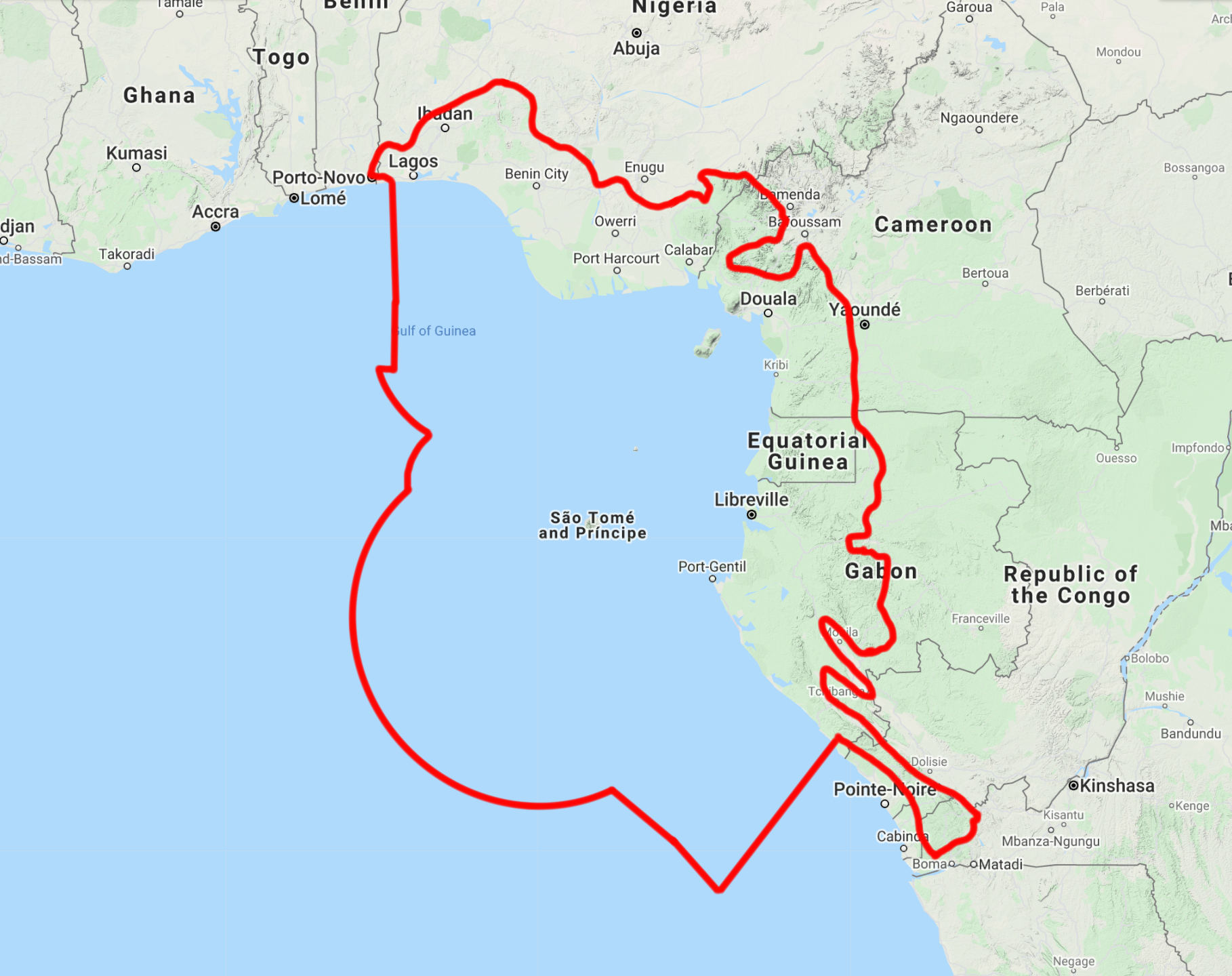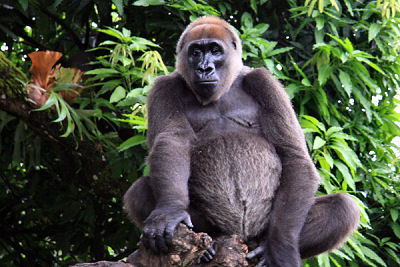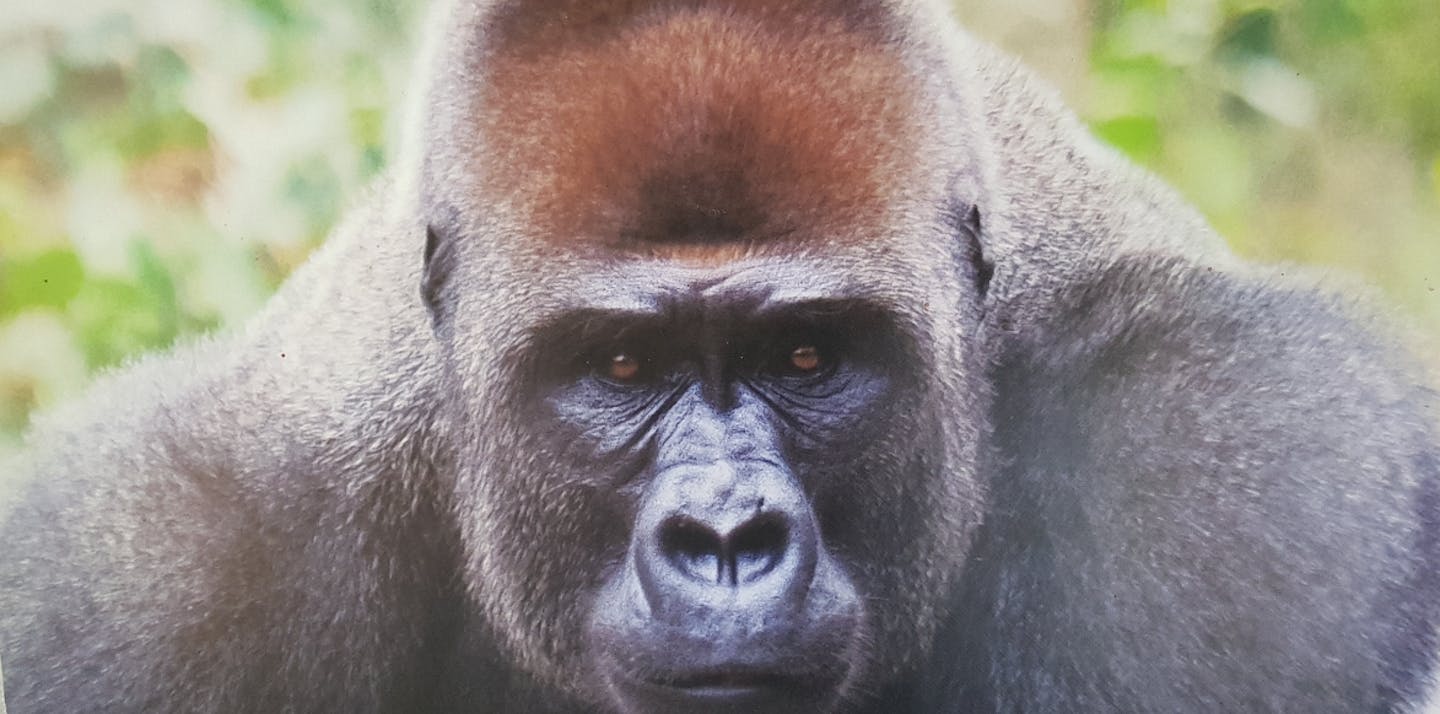Cross River lowland gorillas: the world’s rarest great ape
One Earth’s “Species of the Week” series highlights the flagship species of each of the 844 unique ecoregions contained within Earth’s bioregions.
Deep in the mountainous rainforest of Cameroon and Nigeria, living amongst the bamboo thickets and vast Cross River is a species unknown to science until the early 20th century. The Cross River lowland gorilla is the most secluded of all the gorilla species, and with a population of only around 250-300 individuals, it is considered the world’s rarest great ape.

Cross River lowland gorillas are the flagship species of the Cross-Sanaga-Bioko Coastal Forests ecoregion, located in the Gulf of Guinea Coastal Forests & Mangroves bioregion (AT17).
The genus Gorilla is divided into two species, the eastern and western gorilla. Eastern gorillas include the subspecies of the mountain gorilla and eastern lowland gorilla, or Grauer’s gorilla. Western gorillas include the subspecies of the western lowland gorilla and the Cross River lowland gorilla.
What separates the Cross River gorilla from its western lowland gorilla cousin is noticeably smaller stature, skulls, and tooth measurements. However, the Cross River gorilla males can still have a height of 175 cm (5 ft 9 in) and weigh up to 200 kg (440 lb). Females are slightly smaller, with a height of 140 cm (4 ft 7 in) and a weight of 100 kg (220 lb).

A distinct behavior of Cross River gorillas is how they nest. From April through November, Cross River gorillas are more likely to build their nests within a tree due to the wet season. In the dry season, from November on, they are more likely to build nests on the ground.
Their diet also is greatly influenced by the season. Cross River lowland gorillas prefer fruit, but as the dry season creates scarcity, they will eat vegetation, liana, and tree bark. Both sources of food play an essential role in the tropical forests in which they live.
When eating fruit, Cross River lowland gorillas help disperse seeds in their droppings throughout the forests. As their diet shifts to vegetation and bark, they help prune the rainforest and make room for those new seedlings to grow.
Groups of Cross River gorillas comprise one dominant male, several females, and their offspring. Little is known about their reproduction, but most biologists agree that the gestation period is similar to the other gorillas between 8.5 – 9 months. Females feed and take care of their young during the initial years of their life.

Research suggests that only 11 groups of Cross River gorillas are known to exist today. Due to habitat loss by human encroachment and the animal’s wariness of people, these gorillas are being driven even further into isolated areas.
This confinement puts the population at risk as they lose genetic diversity resulting in inbreeding and a high infant mortality rate. Estimates suggest that there are less than 200 mature Cross River gorillas with 50-100 adolescents.
The best way to protect Cross River lowland gorillas is to conserve their habitat. By safeguarding the current rainforest and replanting areas that have been degraded by deforestation, Cross River gorillas can be free to roam, breed, and perhaps one day lose their title of “world’s rarest great ape.”



